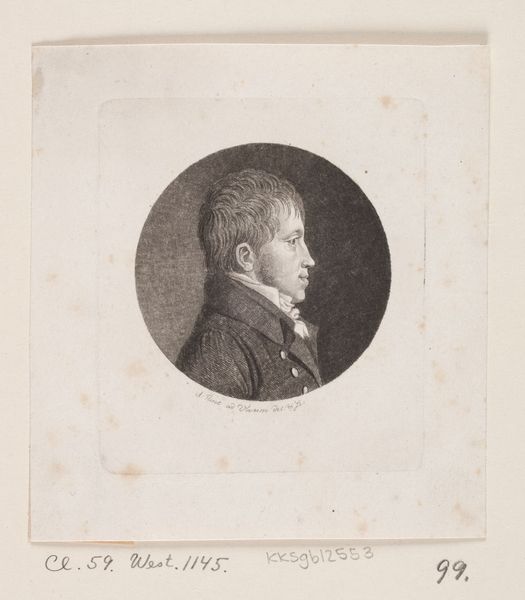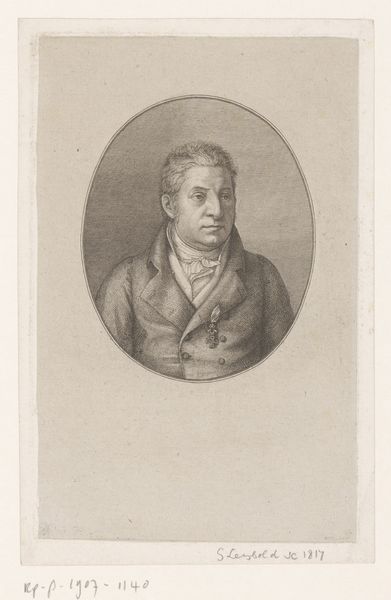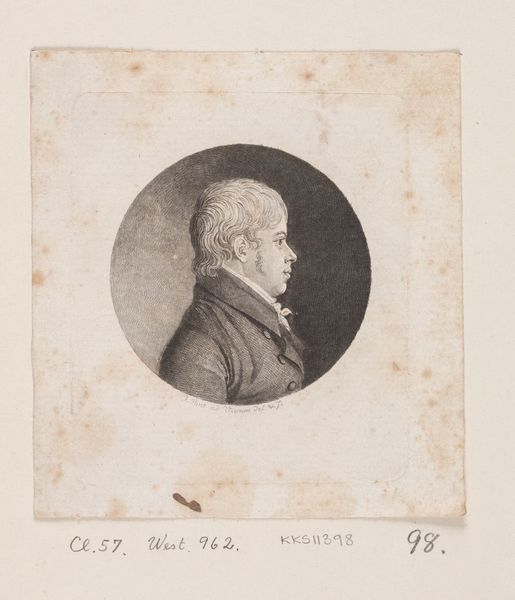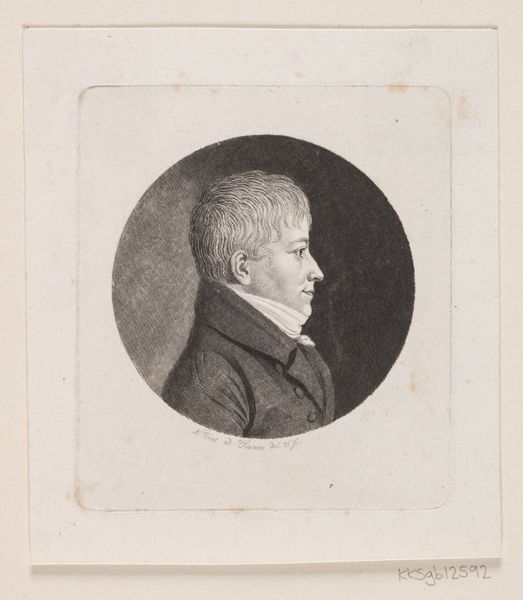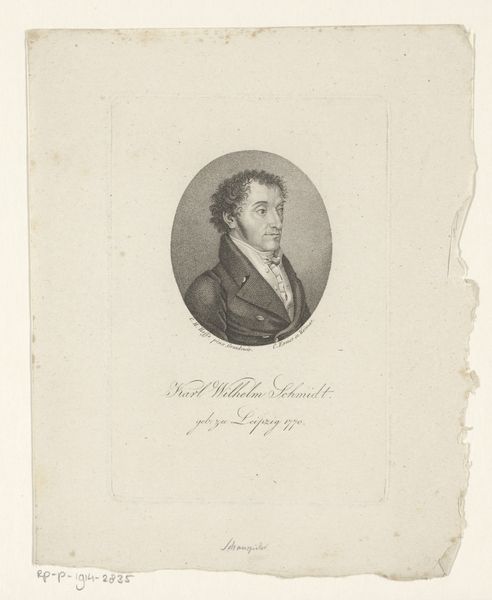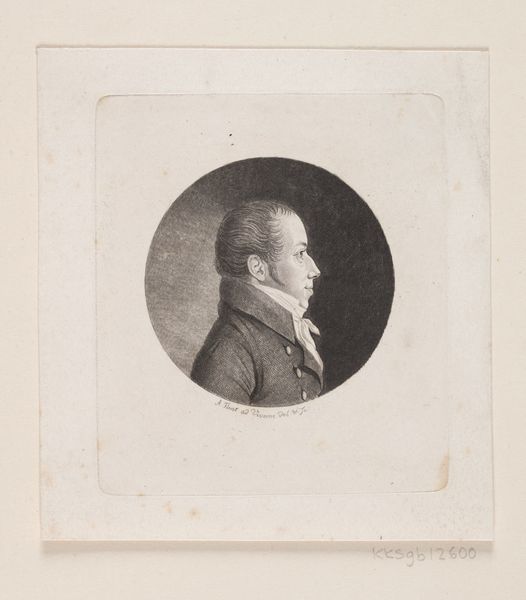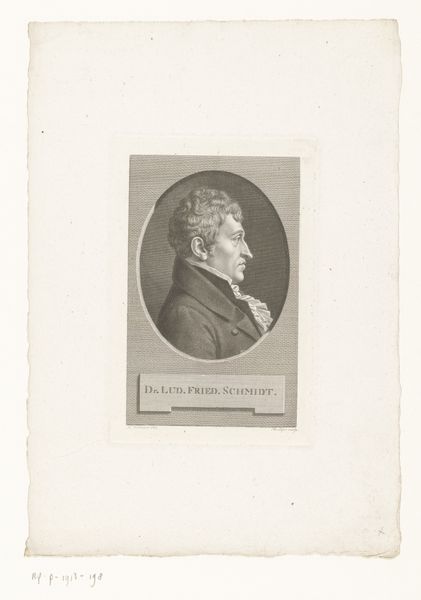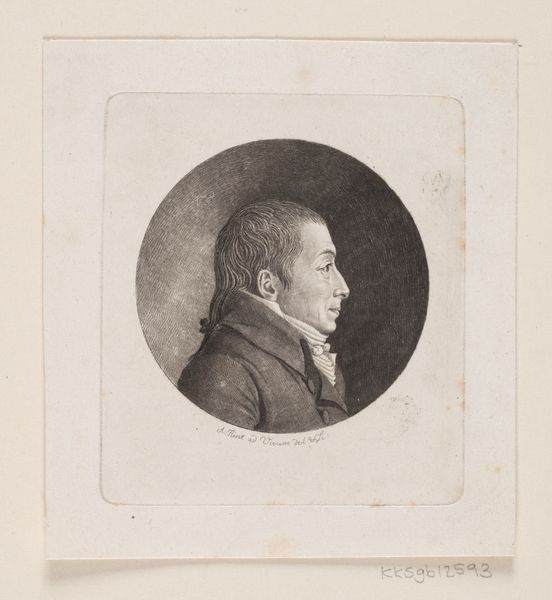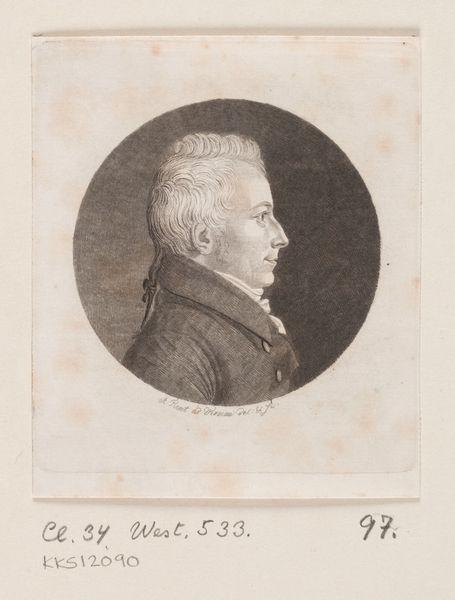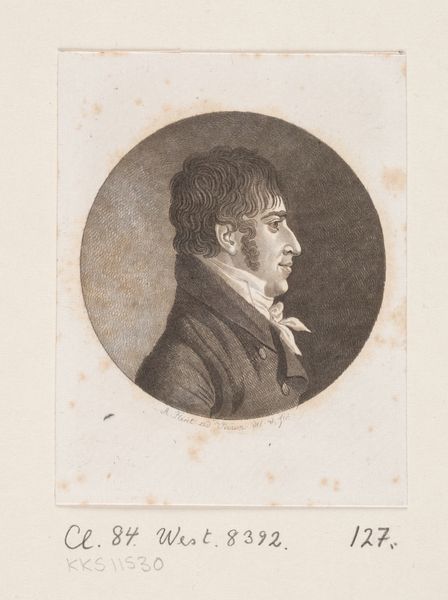
print, engraving
#
portrait
#
neoclacissism
# print
#
engraving
Dimensions: 63 mm (None) (billedmaal), 88 mm (height) x 80 mm (width) (plademaal)
Curator: Welcome to the Statens Museum for Kunst. We're standing before a striking engraving, a portrait of Jacob Nicolai Prahl, created sometime between 1767 and 1824. Editor: It possesses such restrained elegance. The monochrome palette gives it a neoclassical feel. He has a faraway gaze. I feel the weight of history emanating from it, a tangible connection to a man of that era. Curator: Absolutely. Let's consider the historical and social climate that informed its creation. This was an era defined by burgeoning Enlightenment ideals. Think about the socio-political power dynamics present. Consider that we are very possibly looking at a depiction of someone who directly benefitted from and shaped society as he knew it. Who was Jacob Nicolai Prahl to warrant a portrait? Editor: His silhouette enclosed within that perfect circle adds to its air of formality. Look at how his coat is rendered. Notice, also, how the engraver managed to imply the softness of fabric within such a restricted medium. There’s an interesting contrast with the tamer rendering of the facial features. It's subtle, almost understated, and there's power in that understatement. It almost acts as an idealized token. Curator: The engraver has made fascinating choices in constructing symbols of power and importance through this single depiction, especially in the context of early 19th-century Danish society and culture. In portraiture of this time, representations of class and status, access and social mobility are being presented to viewers through deliberate symbols that need deconstruction and a deeper look to extract its social meaning. It speaks volumes about the politics of representation and the role of art in reinforcing certain societal structures. Editor: The choice of rendering only in profile makes this person more like a silhouette, more like a historical artifact than someone approachable in everyday society. But even reduced to those basic, recognizable symbolic gestures, the artist still conveys a sense of the man himself. He is a solid man of his day and era. I get the impression of firmness, in posture and in life. Curator: In what way could his identity inform, complicate, or potentially even subvert our reading of this portrait, and more broadly, the historical narrative it participates in? Considering these themes opens avenues for critical analysis, doesn't it? Editor: It absolutely does. Curator: I agree, that his direct expression lends an aura of resolve to this visual encoding. Editor: A tiny window into the past, shaped by symbols that echo even now.
Comments
No comments
Be the first to comment and join the conversation on the ultimate creative platform.


